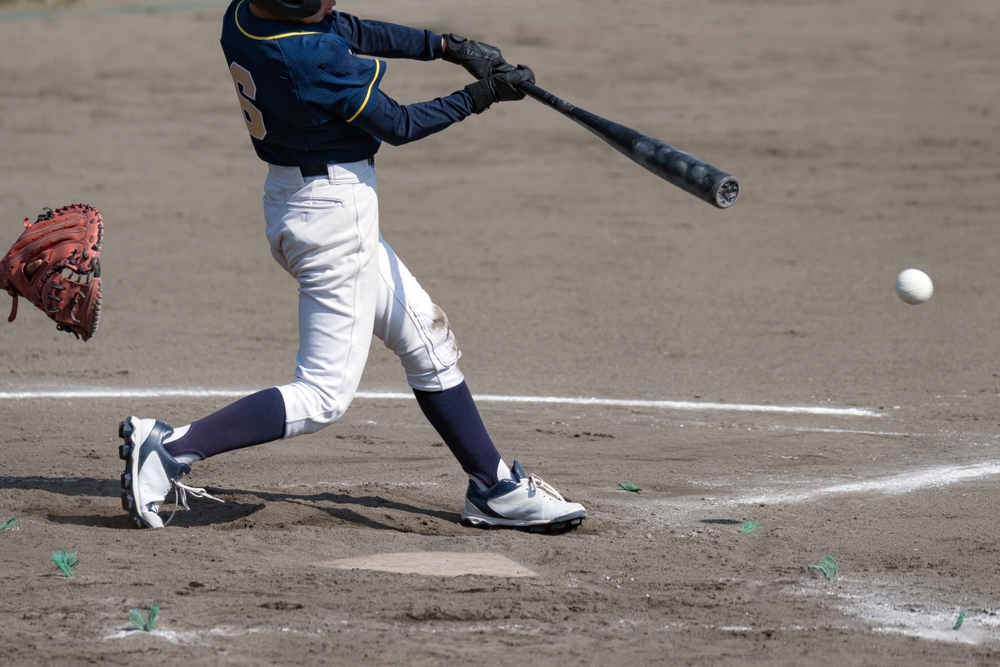In baseball, concentration and focus are paramount to success at the plate. As Yogi Berra once said, “hitting is 90 percent mental, the other half is physical.” A hitter needs body balance, mechanical rhythm, and focused concentration.
To stay focused, a player must remain mentally tough and disciplined. This means being aware of their thoughts, staying present in the moment, and shutting out external distractions. Before game day, players might develop a specific batting practice regimen or visualize themselves in the batter’s box. For focus while batting, many players develop a hitting ritual.
How to Develop a Hitting Ritual
Your hitting ritual sets [and resets] your focus. It begins as you approach the on-deck circle and ends as you watch through contact [or walk back to the dugout]. The ritual is to have practiced repetition—to control the things you can control, especially your concentration. From Nomar Garciaparra’s infamously-long toe-tapping and glove-adjustment routine to David Ortiz’s spitting hand slaps, hitting rituals help players clear their minds to focus solely on the task at hand.
1. On-Deck Circle Ritual
Though it’s often called “waiting” on deck, it should be an intentional preparation time for a hitter. As the next batter up, your time in the on-deck circle is essential to hitting success. You should stretch out quickly to activate your core, arms, and hands. Some players use a donut, or weighted bat, for a few swings. Use each pitch while you’re on deck as an opportunity to ‘time’ the pitcher and get a feel for their delivery. Make yourself aware of the situation on the field, and remain calm even if something exciting happens. However you warm up, do it consistently.
Nick Swisher: “Each guy does what’s right for him. How you feel matters most.”
2. Walking to the Plate
Take the time you need. The big leagues are subject to pitch clocks, but until you’re up against a clock, don’t let the pitcher rush you into the box. [This is a great time to breathe.] The best hitters find a near-zen when they approach the plate.
Bobby Witt, Jr.: “Just get a good routine whether it’s in the dugout, or coming to the on-deck circle, or getting into the box. I’ve kept that same [routine] going up to the plate since freshman year to now: Going up there, getting a look at my bat, I find a little focal point, take a deep breath and just say something, whatever’s going in my head like ‘it’s time,’ just get that confidence going.”
Mike Trout: “I walk slowly to the plate and work through my routine with the bat and batting gloves, and take that good, deep breath. A big thing for me is finishing that breath before I get in the box. It really kicks in when I snap my last batting glove.”
3. Batter’s Box Ritual
Some wave their bat, some tap their shoes or the plate, and some point to the bleachers. Some wiggle, some kiss their jewelry, and some write in the dirt.
There’s a different batter’s box ritual for every player who has ever stepped in. It helps you get loose and gives you another moment to breathe. Whatever you do, do it the same every time.
Bryce Harper: “I get in, dig in, scrape the dirt. Then I touch out [with my bat], touch in, then touch out again. Then I hit the front of my foot, like my big toe, pretty much. Then I go up [with the bat], look at the pitcher and [bring the bat back]. There’s no real reason for it; it’s just something I’ve always done, something I’m comfortable with.”
4. Where to Focus During a Pitch
As a pitch is delivered, successful batters transition through their focal point four times from when the pitcher starts their windup to swinging the bat. Repetition is essential to training this focus, especially with pitch recognition. This part of the ritual is universal.
- Before the Windup: With relaxed eyes, find a soft focus on the logo of the pitcher’s hat or spot on their jersey. [Manny Ramirez: “When I look at nothing, I see everything.”]
- Release Point: As the pitcher is finishing their motion, lock your eyes into a hard focus on the release point—the exact spot where the ball leaves their hand.
- First Movement: Recognizing what the ball will do based on the initial movement of the pitch is the single most challenging part of baseball.
- At Contact: Keep a hard focus on the ball through contact. [Head down through contact!]
5. Between Pitches
You’re still at the plate. Most umpires don’t allow as much time between pitches as at the start of your at-bat, so with a shortened version of your routine, you want to take a breath and determine how the count might change your approach. Are you taking a pitch or swinging away? Are you shortening up with two strikes? Find the sign from your coach and settle back in.
Aaron Judge: “For me, [picking up dirt in the batter’s box] is just a way of slowing things down—taking an extra two or three seconds to grab some dirt. All my negative thoughts that I have about, ‘How did you miss that pitch? Why did you miss that pitch? You shouldn’t have missed that pitch.’ I just kind of sit there and kind of crush it up, and once I’m done doing that, I just kind of toss it aside. That’s basically tossing all those thoughts out like, ‘Hey, that’s done with. That’s over with now. Start fresh and get back in the box and get back to your positive thoughts.'”
6. Always
Tony Gwynn: “Remember these two things: play hard and have fun.”
Play Ball on the Iconic Replica Fields at Ballparks of America
Is your team ready for the ultimate stay-and-play experience? Sign your team up for one of our tournaments and enjoy all the fun that Ballparks of America has to offer!





